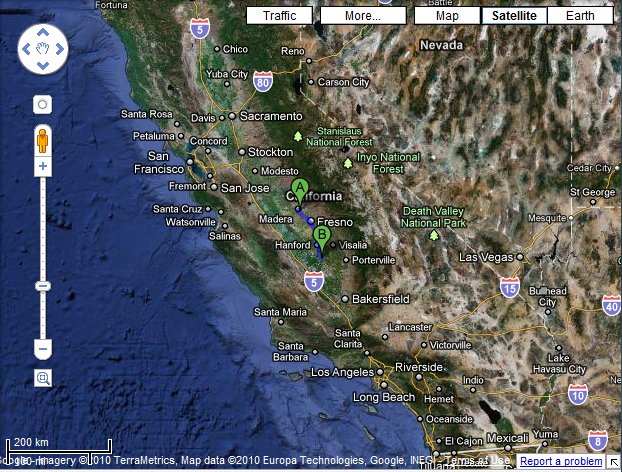… there are those in Calgary who, in their most secret of hearts, would love to abolish the Stampede and wipe out its memory. The Stampede, to the Calgarian, is both curse and blessing, and when all the curses are thrown into the balance, you cannot help being impressed by their weight. For starters, the Stampede kills. And we’re not just talking about the chuckwagon races. There’s a scholarly paper from 2006 in which statisticians from Montreal and Edmonton wrote about their efforts to develop forecasting models for EMS demand in Calgary. They found the numbers don’t quite work unless the Stampede is included as a variable: ambulance and rescue services become so busy during the 10-day party that it throws all the equations off-kilter.
The Stampede itself is very solvent, earning an operating surplus of $3.1 million in 2011, but if the costs and benefits to the city were all counted up, the former would have to include the salaries of the thousands of high-paid Calgary professionals who see major parts of their calendar devoured by Stampede preparations and aftermath. It would include the tacit outright cancellation of nine-to-five work for the duration of the Stampede at key Calgary oil patch companies and law firms. And it would include the arms race of conspicuous consumption that sees expensive entertainers like Cirque du Soleil and the Tragically Hip brought into town for exclusive corporate affairs at Stampede time.
Meanwhile, the perceived importance of the Stampede has led to the entrenchment of a shadowy, at least slightly sinister relationship between the city’s government and the Stampede board. It took a long skein of bailouts, sweetheart deals and low-interest loans from Calgary’s city government to make the show what it is today. Over the decades, Calgary has repeatedly used its power to borrow cheaply to fund Stampede expansions, and even expropriated land outright in the Victoria Park neighbourhood in the late 1960s when some homeowners were reluctant to sell. Because the city technically owns the Stampede grounds, the Stampede pays no property tax on them. Conflicts of interest are rampant and ignored, except on those occasions when the Stampede tries to pull off some particularly ambitious business or real estate deal. Local media know they must tread carefully before broadcasting or printing anything even slightly negative about the various entities that sustain the city’s totemistic event.
Of course the Stampede has made the name of Calgary world-famous. Calgarians abroad are as sure to be asked about their Stampede as Edmontonians are to be asked about their big mall. But the marketing effect is double-edged. Andy Sayers, a communications specialist for a mid-sized Calgary oil-patch-service company, says he and others in his field “struggle with themselves” every year as the bacchanal he compares to “the last days of Rome” approaches. “I spend most of my time trying to inculcate the image of our firm as ultra-modern thought leaders”, he says. “Then I have to create the invitations to our Stampede event. It’s tricky to wrap yourself in the blanket of the Stampede — to offer a down-home feeling to visitors without making yourselves look small-time.”
Colby Cosh, “The Calgary Stampede at 100: It may be over-the-top and at times dangerous, but Calgary’s Wild West show is the best party in Canada”, Maclean’s, 2012-07-06.
July 11, 2023
QotD: The Calgary Stampede
July 5, 2018
The soon-to-be-announced target of the two-minute unceasing hate
At Reason, Jacob Sullum says Trump did well with his first Supreme Court pick, and the unwillingness of Trump’s opponents to acknowledge that shows how much blind partisanship has gripped the left:

Anthony M. Kennedy, Associate Justice of the Supreme Court of the United States, swears in Supreme Court Justice Neil M. Gorsuch on Monday, April 10, 2017, in the Rose Garden of the White House in Washington, D.C. Also shown, Gorsuch’s wife Louise stands on stage holding a family Bible. Justice Gorsuch is the Supreme Court’s 113th justice.
White House photo via Wikimedia Commons.
“We have to STOP the next Trump nominee!” says a pop-up solicitation on People for the American Way’s website. Before you rush to “donate now,” you might want to consider the organization’s assessment of Trump’s last Supreme Court nominee.
“Far from being a fair-minded constitutionalist,” PFAW says, Neil Gorsuch “has proven to be a narrow-minded elitist who consistently votes in favor of corporations and the powerful.” The gap between that description and Gorsuch’s actual performance on the Court speaks volumes about the blind partisanship of Trump critics who care more about scoring political points than defending civil liberties.
PFAW is echoing the criticism of Democratic senators who worried, before Gorsuch was confirmed in April 2017, that he was not inclined to stand up for “the little guy.” Gorsuch’s record during a decade on the U.S. Court of Appeals for the 10th Circuit belied that claim, and his 15 months on the Supreme Court provide further evidence that he is not shy about defending the principles that protect politically disfavored individuals from the whims of the powerful.
In sharp contrast with the man who nominated him, Gorsuch worries about abuses of the government’s power to take people’s property “for public use.” In June 2017, when the Court declined to hear a case that raised the question of whether a state can impose limits on the “just compensation” it owes for takings under the Fifth Amendment, Gorsuch, joined by Clarence Thomas, urged his colleagues to address that issue at the “next opportunity.”
That pairing was notable because Gorsuch is on record as admiring Thomas’s passionate dissent from the widely condemned 2005 decision in which the Court approved the use of eminent domain to transfer property from one private owner to another in the name of economic development. Big businesses routinely use such arrangements to override the wishes of little people who get in the way of their plans.
October 5, 2017
Out of Frame: The Real Life Wilson Fisk
Foundation for Economic Education
Published on 5 Oct 2017Wilson Fisk is one of the most terrifying villains in the Marvel universe. Good thing he’s just fictional, right? Wrong!
In this episode of Out of Frame, we explore the real-life Wilson Fisk, a central planner from America’s not so distant past.
Learn more about Robert Moses and his greatest nemesis, Jane Jacobs at FEE: https://fee.org/articles/jane-jacobs/
May 26, 2015
Ilya Somin’s new book on eminent domain
The book is being published in time to mark the tenth anniversary of the Supreme Court’s dreadful Kelo decision:
My new book, The Grasping Hand: Kelo v. City of New London and the Limits of Eminent Domain is now in print. It is the first book about the Kelo decision and the massive political backlash it generated, written by a legal scholar. The Grasping Hand is coming out just in time for the tenth anniversary of Kelo on June 23.
Here is a summary from the University of Chicago Press website (the book is also co-published by the Cato Institute):
In 2005, the Supreme Court ruled that the city of New London, Connecticut, could condemn fifteen residential properties in order to transfer them to a new private owner. Although the Fifth Amendment only permits the taking of private property for “public use,” the Court ruled that the transfer of condemned land to private parties for “economic development” is permitted by the Constitution – even if the government cannot prove that the expected development will ever actually happen. The Court’s decision in Kelo v. City of New London empowered the grasping hand of the state at the expense of the invisible hand of the market.
In this detailed study of one of the most controversial Supreme Court cases in modern times, Ilya Somin argues that Kelo was a grave error. Economic development and “blight” condemnations are unconstitutional under both originalist and most “living constitution” theories of legal interpretation. They also victimize the poor and the politically weak for the benefit of powerful interest groups, and often destroy more economic value than they create. Kelo itself exemplifies these patterns. The residents targeted for condemnation lacked the influence needed to combat the formidable government and corporate interests arrayed against them. Moreover, the city’s poorly conceived development plan ultimately failed: the condemned land lies empty to this day, occupied only by feral cats.
The Supreme Court’s unpopular ruling triggered an unprecedented political reaction, with forty-five states passing new laws intended to limit the use of eminent domain. But many of the new laws impose few or no genuine constraints on takings. The Kelo backlash led to significant progress, but not nearly as much as it may have seemed.
Despite its outcome, the closely divided 5-4 ruling shattered what many believed to be a consensus that virtually any condemnation qualifies as a public use under the Fifth Amendment. It also showed that there is widespread public opposition to eminent domain abuse. With controversy over takings sure to continue, The Grasping Hand offers the first book-length analysis of Kelo by a legal scholar, alongside a broader history of the dispute over public use and eminent domain, and an evaluation of options for reform.
March 1, 2011
August 26, 2010
If you like Eminent Domain, you’ll love Montgomery’s version
Christina Walsh reports on an Alabama city’s even-more-tyrannical-than-eminent-domain law:
Imagine you come home from work one day to a notice on your front door that you have 45 days to demolish your house, or the city will do it for you. Oh, and you’re paying for it.
This is happening right now in Montgomery, Ala., and here is how it works: The city decides it doesn’t like your property for one reason or another, so it declares it a “public nuisance.” It mails you a notice that you have 45 days to demolish your property, at your expense, or the city will do it for you (and, of course, bill you).
Your tab with the city will constitute a lien on your property, and if you don’t pay it within 30 days (or pay your installments on time; if you owe over $10,000, you can work out a deal to pay back the city for destroying your home over a period of time, with interest), the city can sell your now-vacant land to the highest bidder.
H/T to Institute For Justice for the link.
February 26, 2010
Detroit has no problem that the government can’t make worse
Detroit has had a rough time lately — if you define “lately” as 50 years. But never fear . . . in spite of depopulation, de-industrialization, urban decay, crime, and soaring rates of illiteracy, the government is going to do something:
From its status as one of the wealthiest communities in the country, with a population of close to 2 million people 50 years ago, it has shrunk to a chaotic, sclerotic mess of 900,000 souls.
So in America, land of the free, the city elders of Detroit are now planning a forced march down Woodward Avenue. Citizens will be relocated from desolate neighbourhoods, their former homes bulldozed.
How will the city get people to move? In some cases, it will invoke eminent domain legislation, that favourite weapon of central planners, and expropriate. In others, it will simply cut off more services as they become too expensive to provide.
Mass state-driven relocation has happened in Communist China, the former Soviet Union, but America? Not since the creation of Native American reservations, and certainly not in 21st century urban areas.




